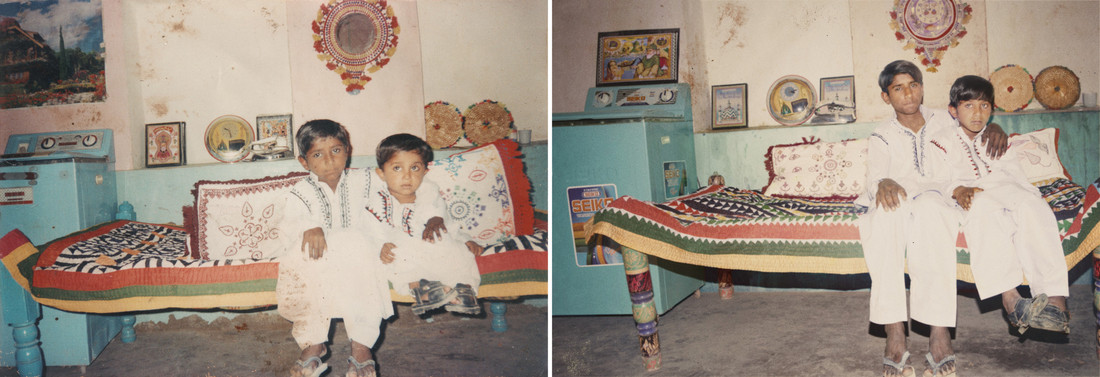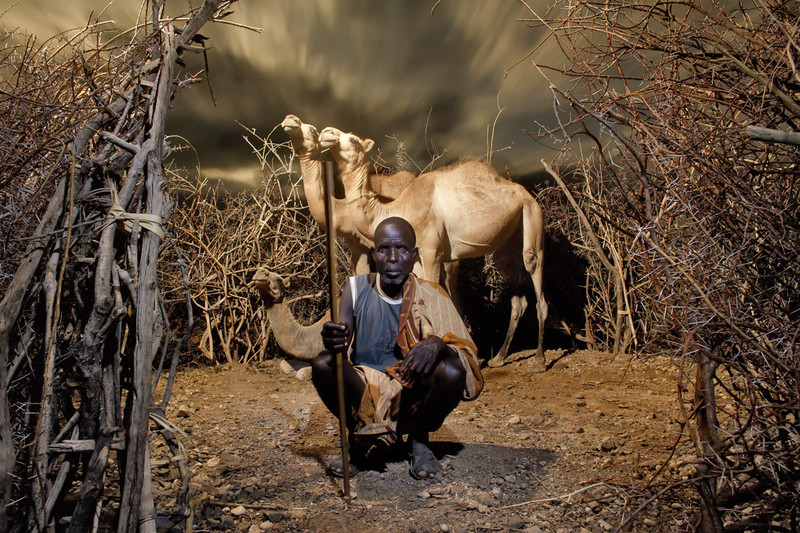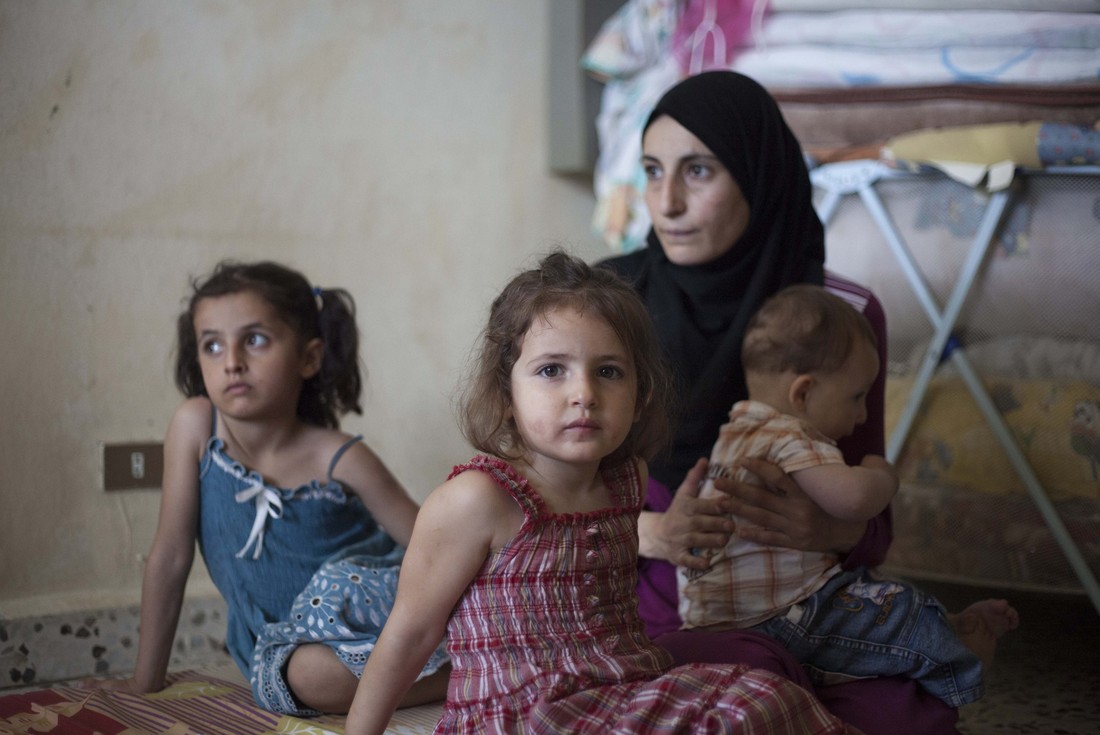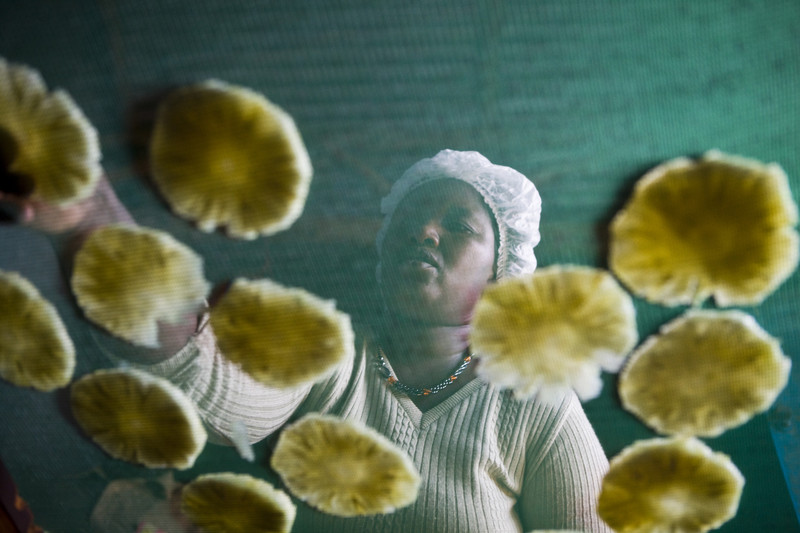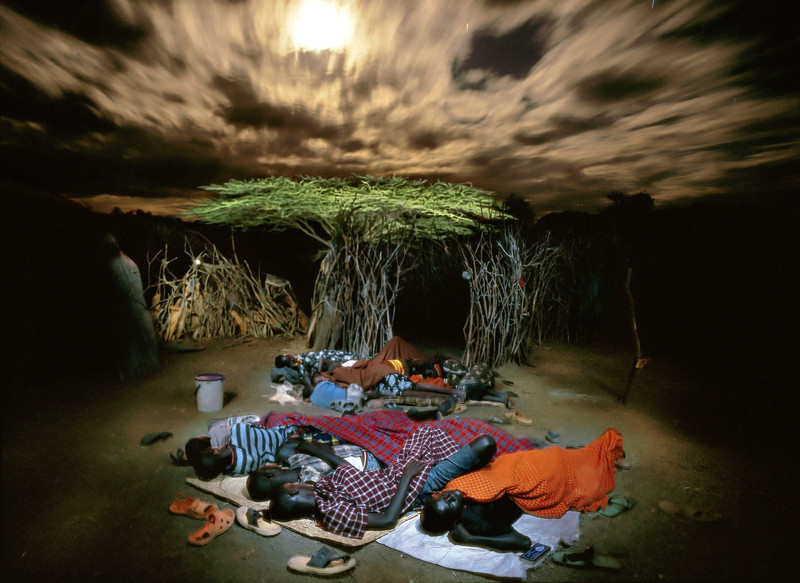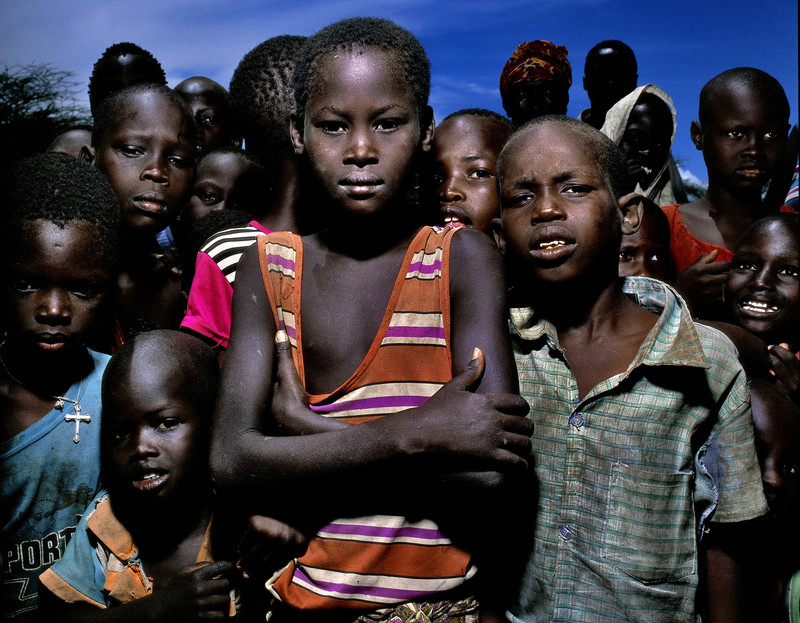Amy Christian
Commissioning Editor at Oxfam
Tell us little about your career to date and how you ended up in your role as Commissioning Editor for Oxfam.
My love for photography started whilst I was at college, I was captivated by visual storytelling and conceptually driven images. Until that point I hadn’t really known what I wanted to do but from then on my life has been driven by my passion for photography. After studying photography at University, a short stint working as an assistant to a fashion photographer and dabbling with an interest in photojournalism and conflict I became particularly interested in international development. It was then that I applied to intern on the picture desk at Oxfam, I wanted to see how NGO’s use photography to tell the story of the developing world and their work within it. I knew that Oxfam was developing a new visual identity, breaking boundaries in the sector by working with photographers such as Rankin and Martin Parr.
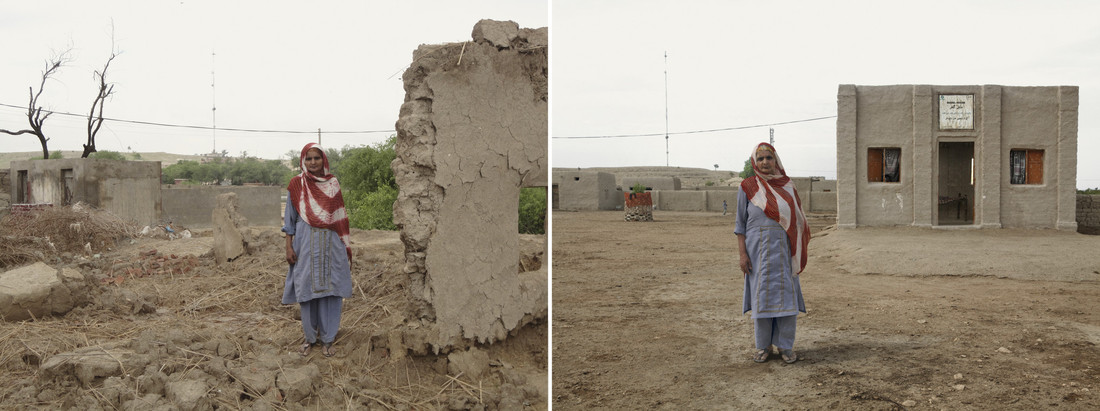
The day I walked into Oxfam for my interview I knew it was where I wanted to work and I’ve been here ever since. I’ve always worked in the Film and Photography team and my roles have always been diverse. When I started, I worked on selecting and sharing incoming content from trips, and now I commission the trips and work on them as a producer and story gatherer. I’ve commissioned and worked alongside photographers Perou, Alejandro Chaskielberg, Irina Werning, Simon Rawles and Olivia Arthur amongst many others, producing a range of different visual packages that tell the story of Oxfam’s work.
I’m currently working on a series of trips for which we have teamed up with Magnum Photos, commissioning three of their most talented female photographers to produce a body of work that tells the story of the women Oxfam is working with around the world in support of our spring appeal.
What does your role as multimedia producer and story gatherer entail? Talk us through the process of how you gather visual content for Oxfam’s campaigns.
My role as Commissioning Editor at Oxfam is very diverse, with new challenges everyday and a constantly evolving platform from which to tell the stories of our work.
When our team receives a brief to deliver content for a campaign or to tell the story of a particular programme we kick off the process by setting up various meetings with our wider creative team to produce concepts that help best tell the story of Oxfam’s work and will appeal to our target audience. Before we gather any content we aim to do everything we can to ensure it will work as much as possible across all relevant channels and platforms, including our website, social media channels, print and media.
Once I have the programmes and concepts identified I spend lots of time planning a detailed itinerary and working closely with our local programme staff to ensure we are able to gather the materials needed. Our programme staff are best placed to help us identify the strongest stories, they know the projects inside out and spend their days working alongside the people Oxfam is helping. Building strong relationships with our programme staff is, for me, key to a successful content gathering trip.
A crucial part of delivering compelling content for Oxfam is in commissioning appropriate and interesting photographers and film makers to help us tell the story of our work in a visually interesting and arresting way. Over the years we have been lucky enough to build a contact list which includes some of the most talented and sought after photographers and film makers around the world. There are always several people on my shortlist to commission at any given time, but matching the right photographer/ film maker to the project is essential.
Once the trip has been planned and I have commissioned a photographer and/ or film maker I travel alongside them to ensure the trip runs smoothly and to also work as a story gatherer, interviewing the people Oxfam is working with to produce a package of stories to be used alongside the photos. Emotive first hand quotes are used in all of our materials alongside the photos to help engage our audiences with the stories and our work.
In terms of video and photography, what are the biggest challenges that Oxfam face when creating and disseminating visual content to the public.
The biggest challenges we face when producing content at Oxfam are most often around the sensitivity of the subject matter, for example when campaigning on land grabs or when telling the story of children who are HIV positive. Protecting the people we work with is always our number one priority and so we are often required to think creatively around hiding identities in photographs and films. Protecting identities whilst still allowing our audiences to feel connected emotionally to the story can often be a challenge. We know from research that our supporters connect more easily with a story emotionally when they ‘see’ that person. We usually try to get photos with direct eye contact for example. When you can’t show the identity of a person you have to start being very creative and the stories and emotive quotes become increasingly important for telling a compelling story.
Social media is now the major platform for sharing work and campaigns. How significantly has social media impacted on the way Oxfam operates in order to draw attention to important issues?
The rise of social media platforms such as FaceBook and Twitter have had a huge impact on how Oxfam communicates with its supporters. The way people consume film and photography on social media platforms is significantly different from print and more traditional on line platforms such as our website. Our team has been working increasingly more closely with our social media team to maximise the potential of content we gather on trips for sites like FaceBook and Twitter. From ensuring we gather more photos that are suitable for sharing, to producing social media friendly films and even doing live blogs from the field with tweets, photos, vine clips and audio boo’s coming straight from the project in real time.
We’ll continue to develop new social media strategies that maximise the potential of the content we gather on trips, it’s important to recognise how our supporters want to engage with us and ensure we do everything we can to continue talking to them in a way that is relevant, interesting and engaging.
In recent years the operational activities of picture desks have become much more open to the public. Oxfam provides regular insight into on-going projects through your Inhouse blog. Why do you feel it is important to share the behind-the-scenes process with the public?
The approaches we take to tell the story of Oxfam’s work are often quite unusual and can generate interest in themselves, like for example working with photographer Perou, who went to Kenya to produce a series of high end photos for a campaign about hygiene and sanitation in urban slums. Documenting the ‘behind the scenes’ gives us another way to spark interest in Oxfam’s work and connect with our audiences. It also helps us to be transparent about what we do and how we work with people in the field, creating a platform where we can share our experiences felt like an obvious and natural thing to do.
We’ve also started sharing our ‘behind the scenes’ on our mainstream social media channels with live blogs, audio boos, tweets and Face book posts from the field. Of course, when you open yourselves up to the public in such a way, you risk facing many difficult questions and challenges but so far we have found it to be overwhelmingly positive. Our supporters have responded well to the content we have shared and it has helped us look at story telling from a fresh perspective.
What has been the most rewarding experience during your time at Oxfam?
Without wanting to sound like a cliché, there have been so many rewarding experiences during my time at Oxfam that it’s hard to single out just one. However one that does comes to mind is the work we did for the East Africa food crisis in 2011. We needed to raise funds for much needed work in the region and we knew it would be tough to get people’s attention with more traditional documentary imagery. The public have become somewhat desensitised to traditional imagery of a food crisis and we didn’t want to produce more stereotypical photos that wouldn’t cut through. We had wanted to work with Argentinian photographer Alejandro Chaskielberg for a while, his moonlight photographs are unusual and far from our traditional approach and so we decided to take a leap and approach him for a commission in Kenya. There was a lot of scepticism over whether or not the approach would work and how the images would be received but we felt that the risks were far outweighed by the benefits of doing something new.
The trip was a challenge to organise; planning photo shoots to take place at night in the middle of the Turkanan desert was tough but also quite exciting. We had lots of support from the country team and the communities we worked with welcomed us and our ideas. They saw our new approach as a positive thing and instead of being photographed like victims communities knew they were collaborating in making an image that represented them in a positive way.
The photographs were exhibited at the OXO gallery on Southbank to raise the profile of our work in East Africa and helped raise much needed funds to continue the projects and others like them. They then went on to be used in various communications to our supporters both on line and in print and were picked up by various media outlets.
It was very rewarding to do something so different and see it work so well and fantastic to see that you really can break stereotypes and still raise funds for charity.
The images are still being picked up and used and are actually featured in the World Photography Organisation’s magazine this month.
Oxfam recently partnered with Ideastap for the Oxfam Photography Prize for women 2013. How important is it for Oxfam to nurture emerging photographic talent, and why was it significantly a female-only award?
I am very excited about the launch of our Photography Prize this year. Although at Oxfam we are privileged to be able to work with some of the most talented and sought after photographers in the world, we are always looking for new emerging talent too. We want to keep our imagery fresh and new and working with a variety of photographers and film makers helps us to achieve this. We partnered with Magnum Photos this year and they have a long standing relationship with IdeasTap, we felt including them in the project would make it even more exciting and interesting and seemed like a very natural progression. With Magnum we focused on working with female photographers as the campaign the photos are being produced for focuses on telling the stories of women. It’s about celebrating the success and leadership of women in their communities as well as telling the story of the daily lives of the women with their families. Having a female photographer allows us access we couldn’t have with a man, women photograph women differently, perhaps because they have a closer understanding of the difficulties they face and are able to better relate to how they might feel. We wanted to continue with the ‘all female’ crew on the trips and that’s why the competition was only open for female applicants.
Promoting female photographers was also appealing for Magnum Photos and IdeasTap as they have traditionally been an underrepresented group in photography. With some of the most compelling photographic work coming from the likes of female press photographers such as Abbie Traylor-Smith things are definitely changing but it doesn’t hurt to give the industry a nudge along the way.
I’m hoping that next year we can extend the photographic prize to allow applicants from other countries to apply.
Tell us a little about the most successful campaign you have been involved in.
Seeing the content you’ve produced on a trip raising funds for essential work, especially in an emergency situation when the people Oxfam is working with are particularly vulnerable, is always rewarding, but the Syria crisis has been particularly tough. There are so many complexities involved in telling the story, Syria’s refugees are scattered across various countries, living in a variety of conditions from formal camps to informal settlements and empty buildings. Their needs are great, from basic sanitation and food, to essential winter clothes and blankets and very importantly, adequate shelter.
At the start of 2013 when we launched our appeal for Syria we set ourselves the target of raising £1million for essential winterisation kits. I travelled to Lebanon and worked with a team in the snow to produce content for an appeal, we worked hard to find the stories that could best show the public why their help was so needed. The appeal ended up tripling its target. As the year progressed more and more refugees left Syria in search of a safe place to stay and our target grew, and continues to grow, alongside them. At Christmas we launched our third appeal for Syria, I worked alongside photographer Sam Tarling to produce a body of content with a strong internally developed concept. It was the first time we have ever appealed three times for the same crisis and I am pleased to say that we again smashed our target.
There’s nothing better in this job than when a campaign works well and you see the money coming in for much needed work in the field.
Do you think that the public place as much value on the importance and truthfulness of photography as they have in the past?
I believe that our supporters trust in us to tell the story of our work in a truthful way and that this is important for us to maintain their support. Every image is open to interpretation by the viewer, photographs are subject to the viewers own thoughts and ideas as well as to the truthfulness of the photographer and the camera. On every trip we produce content that tells the ‘real’ story of our programme and the people we work with through a combination of photos, film and first person testimony. I think people still believe in the medium of photography as a truthful source of information, and with developments in technology almost everyone owns a camera of sorts, meaning that photography as a means of communication is probably even more valued and important than it has ever been.
What do you believe has been the most important development in how Oxfam shares visual content?
The ways in which we share our visual content at Oxfam is constantly developing as the environment develops around us, I think it’s difficult to pin point one thing as being the most important. We’ve developed a roster of press photographers who capture Oxfam’s work ever more innovatively. With advances in digital we are able to do so much more with our content than we ever could before, connecting to people daily through social media, with bespoke emails and targeted pop up ads. At Oxfam we recognise that story telling should be at the heart of our communications and we try to think carefully about how we tell those stories and how we reach the people we want to speak to.
Portrait of Amy Christian © Eleanor Farmer
My love for photography started whilst I was at college, I was captivated by visual storytelling and conceptually driven images. Until that point I hadn’t really known what I wanted to do but from then on my life has been driven by my passion for photography. After studying photography at University, a short stint working as an assistant to a fashion photographer and dabbling with an interest in photojournalism and conflict I became particularly interested in international development. It was then that I applied to intern on the picture desk at Oxfam, I wanted to see how NGO’s use photography to tell the story of the developing world and their work within it. I knew that Oxfam was developing a new visual identity, breaking boundaries in the sector by working with photographers such as Rankin and Martin Parr.

The day I walked into Oxfam for my interview I knew it was where I wanted to work and I’ve been here ever since. I’ve always worked in the Film and Photography team and my roles have always been diverse. When I started, I worked on selecting and sharing incoming content from trips, and now I commission the trips and work on them as a producer and story gatherer. I’ve commissioned and worked alongside photographers Perou, Alejandro Chaskielberg, Irina Werning, Simon Rawles and Olivia Arthur amongst many others, producing a range of different visual packages that tell the story of Oxfam’s work.
I’m currently working on a series of trips for which we have teamed up with Magnum Photos, commissioning three of their most talented female photographers to produce a body of work that tells the story of the women Oxfam is working with around the world in support of our spring appeal.
What does your role as multimedia producer and story gatherer entail? Talk us through the process of how you gather visual content for Oxfam’s campaigns.
My role as Commissioning Editor at Oxfam is very diverse, with new challenges everyday and a constantly evolving platform from which to tell the stories of our work.
When our team receives a brief to deliver content for a campaign or to tell the story of a particular programme we kick off the process by setting up various meetings with our wider creative team to produce concepts that help best tell the story of Oxfam’s work and will appeal to our target audience. Before we gather any content we aim to do everything we can to ensure it will work as much as possible across all relevant channels and platforms, including our website, social media channels, print and media.
Once I have the programmes and concepts identified I spend lots of time planning a detailed itinerary and working closely with our local programme staff to ensure we are able to gather the materials needed. Our programme staff are best placed to help us identify the strongest stories, they know the projects inside out and spend their days working alongside the people Oxfam is helping. Building strong relationships with our programme staff is, for me, key to a successful content gathering trip.
A crucial part of delivering compelling content for Oxfam is in commissioning appropriate and interesting photographers and film makers to help us tell the story of our work in a visually interesting and arresting way. Over the years we have been lucky enough to build a contact list which includes some of the most talented and sought after photographers and film makers around the world. There are always several people on my shortlist to commission at any given time, but matching the right photographer/ film maker to the project is essential.
Once the trip has been planned and I have commissioned a photographer and/ or film maker I travel alongside them to ensure the trip runs smoothly and to also work as a story gatherer, interviewing the people Oxfam is working with to produce a package of stories to be used alongside the photos. Emotive first hand quotes are used in all of our materials alongside the photos to help engage our audiences with the stories and our work.
In terms of video and photography, what are the biggest challenges that Oxfam face when creating and disseminating visual content to the public.
The biggest challenges we face when producing content at Oxfam are most often around the sensitivity of the subject matter, for example when campaigning on land grabs or when telling the story of children who are HIV positive. Protecting the people we work with is always our number one priority and so we are often required to think creatively around hiding identities in photographs and films. Protecting identities whilst still allowing our audiences to feel connected emotionally to the story can often be a challenge. We know from research that our supporters connect more easily with a story emotionally when they ‘see’ that person. We usually try to get photos with direct eye contact for example. When you can’t show the identity of a person you have to start being very creative and the stories and emotive quotes become increasingly important for telling a compelling story.
Social media is now the major platform for sharing work and campaigns. How significantly has social media impacted on the way Oxfam operates in order to draw attention to important issues?
The rise of social media platforms such as FaceBook and Twitter have had a huge impact on how Oxfam communicates with its supporters. The way people consume film and photography on social media platforms is significantly different from print and more traditional on line platforms such as our website. Our team has been working increasingly more closely with our social media team to maximise the potential of content we gather on trips for sites like FaceBook and Twitter. From ensuring we gather more photos that are suitable for sharing, to producing social media friendly films and even doing live blogs from the field with tweets, photos, vine clips and audio boo’s coming straight from the project in real time.
We’ll continue to develop new social media strategies that maximise the potential of the content we gather on trips, it’s important to recognise how our supporters want to engage with us and ensure we do everything we can to continue talking to them in a way that is relevant, interesting and engaging.
In recent years the operational activities of picture desks have become much more open to the public. Oxfam provides regular insight into on-going projects through your Inhouse blog. Why do you feel it is important to share the behind-the-scenes process with the public?
The approaches we take to tell the story of Oxfam’s work are often quite unusual and can generate interest in themselves, like for example working with photographer Perou, who went to Kenya to produce a series of high end photos for a campaign about hygiene and sanitation in urban slums. Documenting the ‘behind the scenes’ gives us another way to spark interest in Oxfam’s work and connect with our audiences. It also helps us to be transparent about what we do and how we work with people in the field, creating a platform where we can share our experiences felt like an obvious and natural thing to do.
We’ve also started sharing our ‘behind the scenes’ on our mainstream social media channels with live blogs, audio boos, tweets and Face book posts from the field. Of course, when you open yourselves up to the public in such a way, you risk facing many difficult questions and challenges but so far we have found it to be overwhelmingly positive. Our supporters have responded well to the content we have shared and it has helped us look at story telling from a fresh perspective.
What has been the most rewarding experience during your time at Oxfam?
Without wanting to sound like a cliché, there have been so many rewarding experiences during my time at Oxfam that it’s hard to single out just one. However one that does comes to mind is the work we did for the East Africa food crisis in 2011. We needed to raise funds for much needed work in the region and we knew it would be tough to get people’s attention with more traditional documentary imagery. The public have become somewhat desensitised to traditional imagery of a food crisis and we didn’t want to produce more stereotypical photos that wouldn’t cut through. We had wanted to work with Argentinian photographer Alejandro Chaskielberg for a while, his moonlight photographs are unusual and far from our traditional approach and so we decided to take a leap and approach him for a commission in Kenya. There was a lot of scepticism over whether or not the approach would work and how the images would be received but we felt that the risks were far outweighed by the benefits of doing something new.
The trip was a challenge to organise; planning photo shoots to take place at night in the middle of the Turkanan desert was tough but also quite exciting. We had lots of support from the country team and the communities we worked with welcomed us and our ideas. They saw our new approach as a positive thing and instead of being photographed like victims communities knew they were collaborating in making an image that represented them in a positive way.
The photographs were exhibited at the OXO gallery on Southbank to raise the profile of our work in East Africa and helped raise much needed funds to continue the projects and others like them. They then went on to be used in various communications to our supporters both on line and in print and were picked up by various media outlets.
It was very rewarding to do something so different and see it work so well and fantastic to see that you really can break stereotypes and still raise funds for charity.
The images are still being picked up and used and are actually featured in the World Photography Organisation’s magazine this month.
Oxfam recently partnered with Ideastap for the Oxfam Photography Prize for women 2013. How important is it for Oxfam to nurture emerging photographic talent, and why was it significantly a female-only award?
I am very excited about the launch of our Photography Prize this year. Although at Oxfam we are privileged to be able to work with some of the most talented and sought after photographers in the world, we are always looking for new emerging talent too. We want to keep our imagery fresh and new and working with a variety of photographers and film makers helps us to achieve this. We partnered with Magnum Photos this year and they have a long standing relationship with IdeasTap, we felt including them in the project would make it even more exciting and interesting and seemed like a very natural progression. With Magnum we focused on working with female photographers as the campaign the photos are being produced for focuses on telling the stories of women. It’s about celebrating the success and leadership of women in their communities as well as telling the story of the daily lives of the women with their families. Having a female photographer allows us access we couldn’t have with a man, women photograph women differently, perhaps because they have a closer understanding of the difficulties they face and are able to better relate to how they might feel. We wanted to continue with the ‘all female’ crew on the trips and that’s why the competition was only open for female applicants.
Promoting female photographers was also appealing for Magnum Photos and IdeasTap as they have traditionally been an underrepresented group in photography. With some of the most compelling photographic work coming from the likes of female press photographers such as Abbie Traylor-Smith things are definitely changing but it doesn’t hurt to give the industry a nudge along the way.
I’m hoping that next year we can extend the photographic prize to allow applicants from other countries to apply.
Tell us a little about the most successful campaign you have been involved in.
Seeing the content you’ve produced on a trip raising funds for essential work, especially in an emergency situation when the people Oxfam is working with are particularly vulnerable, is always rewarding, but the Syria crisis has been particularly tough. There are so many complexities involved in telling the story, Syria’s refugees are scattered across various countries, living in a variety of conditions from formal camps to informal settlements and empty buildings. Their needs are great, from basic sanitation and food, to essential winter clothes and blankets and very importantly, adequate shelter.
At the start of 2013 when we launched our appeal for Syria we set ourselves the target of raising £1million for essential winterisation kits. I travelled to Lebanon and worked with a team in the snow to produce content for an appeal, we worked hard to find the stories that could best show the public why their help was so needed. The appeal ended up tripling its target. As the year progressed more and more refugees left Syria in search of a safe place to stay and our target grew, and continues to grow, alongside them. At Christmas we launched our third appeal for Syria, I worked alongside photographer Sam Tarling to produce a body of content with a strong internally developed concept. It was the first time we have ever appealed three times for the same crisis and I am pleased to say that we again smashed our target.
There’s nothing better in this job than when a campaign works well and you see the money coming in for much needed work in the field.
Do you think that the public place as much value on the importance and truthfulness of photography as they have in the past?
I believe that our supporters trust in us to tell the story of our work in a truthful way and that this is important for us to maintain their support. Every image is open to interpretation by the viewer, photographs are subject to the viewers own thoughts and ideas as well as to the truthfulness of the photographer and the camera. On every trip we produce content that tells the ‘real’ story of our programme and the people we work with through a combination of photos, film and first person testimony. I think people still believe in the medium of photography as a truthful source of information, and with developments in technology almost everyone owns a camera of sorts, meaning that photography as a means of communication is probably even more valued and important than it has ever been.
What do you believe has been the most important development in how Oxfam shares visual content?
The ways in which we share our visual content at Oxfam is constantly developing as the environment develops around us, I think it’s difficult to pin point one thing as being the most important. We’ve developed a roster of press photographers who capture Oxfam’s work ever more innovatively. With advances in digital we are able to do so much more with our content than we ever could before, connecting to people daily through social media, with bespoke emails and targeted pop up ads. At Oxfam we recognise that story telling should be at the heart of our communications and we try to think carefully about how we tell those stories and how we reach the people we want to speak to.
Portrait of Amy Christian © Eleanor Farmer
http://creativeinterviews.com/editorial/amy-christian/
